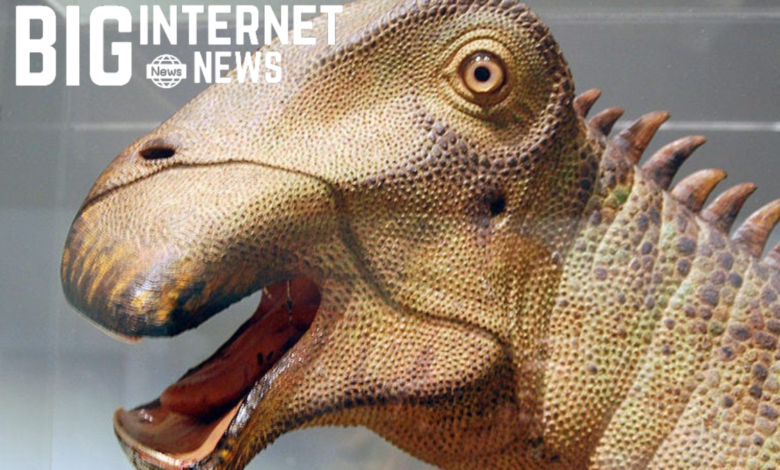Unraveling the Mystery: what dinosaur has 500 teeth

What dinosaur has 500 teeth Dinosaurs are a source of endless fascination. These prehistoric giants ruled the Earth for millions of years, evolving into a vast array of species, each with unique traits. Among these, one dinosaur stands out for its extraordinary dental structure: the Nigersaurus, a creature with an astonishing 500 teeth. Let’s dive into this captivating mystery and uncover what makes this dinosaur so special.
Meet Nigersaurus: The Dinosaur with 500 Teeth
The Nigersaurus is a lesser-known but highly intriguing dinosaur discovered in the rich fossil beds of Niger, Africa. First unearthed in the 1990s and named by paleontologist Paul Sereno, Nigersaurus lived approximately 110 million years ago during the mid-Cretaceous period. This dinosaur belonged to the sauropod family, characterized by long necks and tails, although it was much smaller than its famous relatives like Brachiosaurus.
Physically, Nigersaurus was unique. Measuring around 30 feet in length, it had a relatively short neck for a sauropod. What truly set it apart was its jaw structure. Its broad, flat skull housed an incredible 500 teeth arranged in a specialized, continuous replacement system. This design ensured the dinosaur always had sharp teeth ready to replace worn-out ones, essential for its grazing lifestyle.
The Purpose of 500 Teeth
The remarkable dentition of Nigersaurus served a specific purpose—efficiently processing vast quantities of vegetation. As a herbivore, it fed primarily on low-lying plants like ferns and horsetails, which dominated the Cretaceous landscape. Its teeth were adapted for a grazing lifestyle, with a unique arrangement that allowed it to strip vegetation close to the ground.
Unlike many dinosaurs, Nigersaurus’ teeth were confined to the front of its jaw, forming a wide, horizontal cutting edge. This arrangement resembled a vacuum cleaner, enabling it to mow through plants with precision. Its teeth were unusually thin and fragile, but the constant replacement system ensured they remained functional despite wear and tear.
By comparing Nigersaurus’ feeding habits to other dinosaurs, paleontologists have gained insights into its ecological niche. Unlike sauropods that fed on high foliage, Nigersaurus’ dental structure reveals it specialized in ground-level grazing. This differentiation highlights the incredible diversity of dinosaur adaptations.
Scientific Significance of Nigersaurus’ Dentition
The study of Nigersaurus’ teeth has provided valuable insights into paleontology and evolutionary biology. Its dental structure is one of the most specialized among dinosaurs, reflecting its environment and feeding strategies. By analyzing fossilized remains, scientists have reconstructed how Nigersaurus’ dentition evolved to meet the challenges of its habitat.
Modern technology, like CT scans, has played a crucial role in studying Nigersaurus. These scans revealed the intricate details of its jaw and teeth, including the rows of replacement teeth waiting to emerge. Such findings have helped researchers understand how dinosaurs adapted to their diets over millions of years.
Nigersaurus also offers a glimpse into the ecosystem of the Cretaceous period. Its presence indicates a landscape rich in low-lying vegetation, supporting a variety of herbivores. This further underscores the importance of studying dinosaur dentition, as it sheds light on the broader ecological dynamics of prehistoric Earth.
Nigersaurus in Popular Culture
Despite its scientific significance, Nigersaurus gained unexpected fame in recent years due to internet memes and viral trends. The phrase “dinosaur with 500 teeth” became a popular search query, sparking curiosity and often humor among online communities. While this brought attention to Nigersaurus, it also led to misconceptions about the dinosaur.
Pop culture often simplifies scientific facts, which can obscure the true marvel of creatures like Nigersaurus. Misleading representations may reduce this fascinating dinosaur to a meme, overshadowing its evolutionary significance. However, the attention also highlights the role of media in making paleontology accessible to a broader audience.
For scientists and educators, this cultural phenomenon presents an opportunity to promote accurate information about Nigersaurus. By engaging with the public through books, documentaries, and social media, they can ensure that this dinosaur’s true story reaches a global audience.
Conclusion
Nigersaurus stands out as a remarkable example of nature’s ingenuity. Its 500 teeth, designed for efficient grazing, reflect a highly specialized adaptation to its environment. From its discovery in Africa to its growing presence in popular culture, Nigersaurus continues to captivate both scientists and enthusiasts.
Studying dinosaurs like Nigersaurus not only deepens our understanding of Earth’s history but also reminds us of the incredible diversity of life that once thrived on our planet. As we uncover more about these prehistoric giants, their stories inspire wonder and appreciation for the complexities of evolution.
Also Read: wedding venues